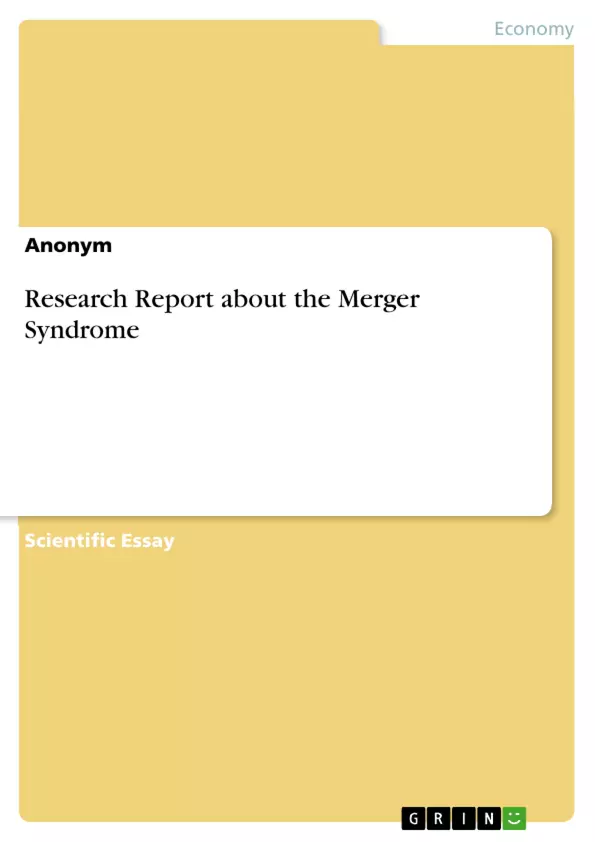1. Introduction
Although mergers have become a popular strategy to reach organisational growth, diversify products, or obtain competitive advantage, the amalgamations do not always lead to improvement and success and often fail, as mergers are accompanied with several severe potential problems (Pikula, 1999). For this research report, the case Grape Expectations: A Case Study of the Southcorp-Rosemount merger, written by John Rice and Peter Galvin and published in 2005, serves as basis for the identification of a problem related to mergers. The study deals with the acquisition of Rosemount Estates by Southcorp Wines in 2001. In this context, it analyses the strategic drivers of the merger, and the tensions and benefits resulting from the acquisition. This research report will examine the merger syndrome in detail, which is one major problem out of many issues related to mergers. The paper will identify the major negative consequences of the merger syndrome and analyse how to deal with it. It will argue that, for managers, the best way to deal with the merger syndrome is to provide good communication to calm and motivate employees and also a retention programme in order to assure employees’ loyalty to the company during the merger.
Inhaltsverzeichnis (Table of Contents)
- Introduction
- Problem Identification
- Merger syndrome
- Definition
- Negative consequences of the merger syndrome
- Recommendations: How to deal with the merger syndrome?
Zielsetzung und Themenschwerpunkte (Objectives and Key Themes)
This research report investigates the merger syndrome, a significant challenge often encountered during mergers and acquisitions. Using the case study "Grape Expectations: A Case Study of the Southcorp-Rosemount merger" as a framework, the report explores the detrimental impacts of the merger syndrome on employees and the organization. It aims to identify key negative consequences of this syndrome and present practical recommendations for mitigating its effects.
- The definition and stages of the merger syndrome
- Negative consequences for employees, including stress, uncertainty, and potential job loss
- Negative consequences for organizations, including absenteeism, poor performance, and employee turnover
- Strategies for effectively addressing the merger syndrome through communication and retention programs
- The importance of proactive communication and employee retention programs in managing the merger syndrome
Zusammenfassung der Kapitel (Chapter Summaries)
The introduction provides background on mergers and acquisitions, highlighting the potential challenges they pose. It uses the "Grape Expectations" case study to illustrate the context of the research. The "Problem Identification" chapter examines the dismissal of employees following the Southcorp-Rosemount merger, linking this to the broader concept of the merger syndrome. The "Merger syndrome" section defines the syndrome and outlines its nine stages, examining the emotional experiences of employees throughout the merger process. It also details the negative consequences of the merger syndrome for both employees and organizations, highlighting the impact on performance, morale, and retention.
Schlüsselwörter (Keywords)
Key terms and concepts explored in this research report include: mergers and acquisitions, merger syndrome, employee stress, job loss, organizational performance, employee turnover, communication, retention programs, case study, Grape Expectations, Southcorp-Rosemount merger.
- Quote paper
- Anonym (Author), 2010, Research Report about the Merger Syndrome, Munich, GRIN Verlag, https://www.grin.com/document/152196



